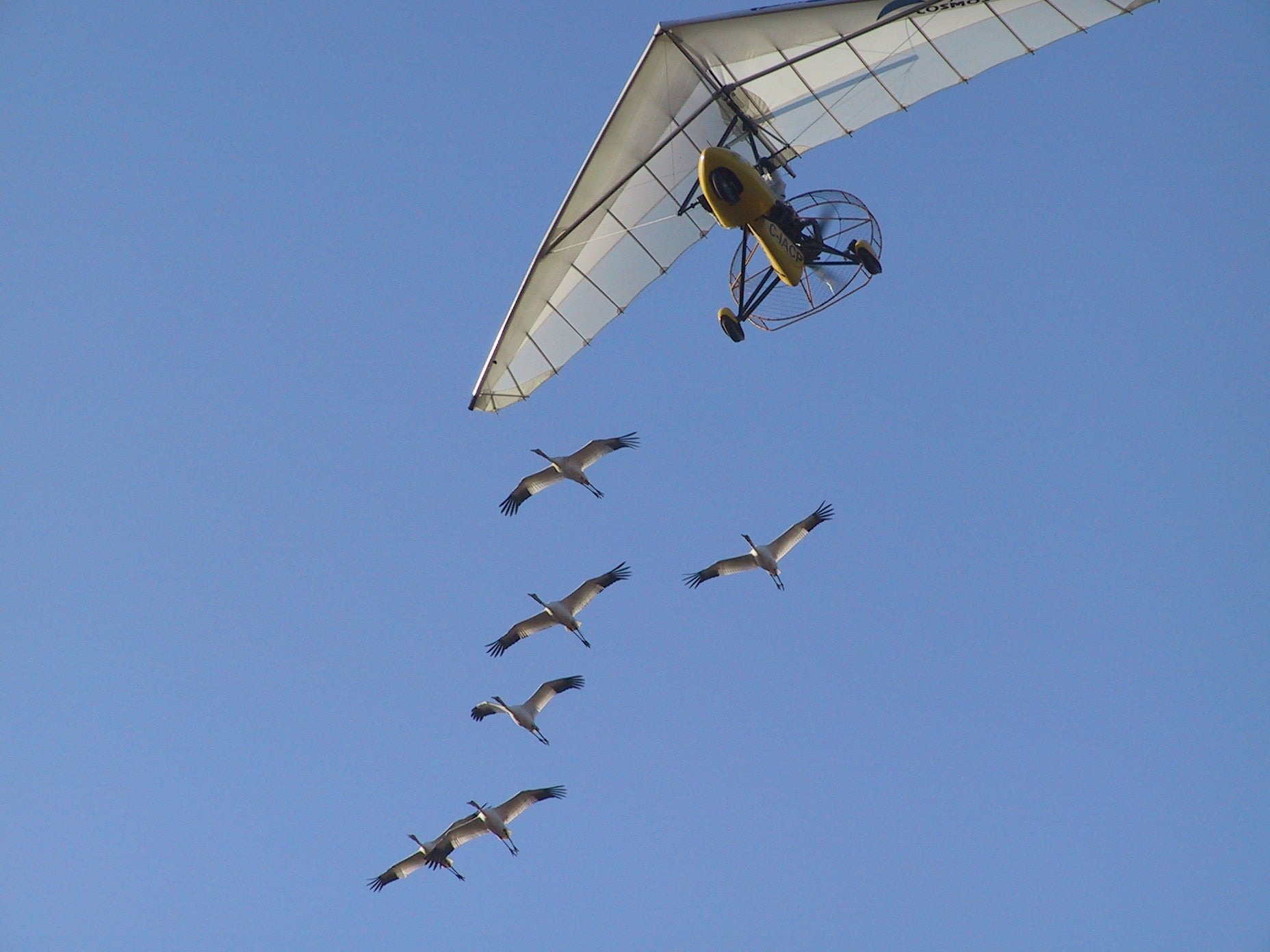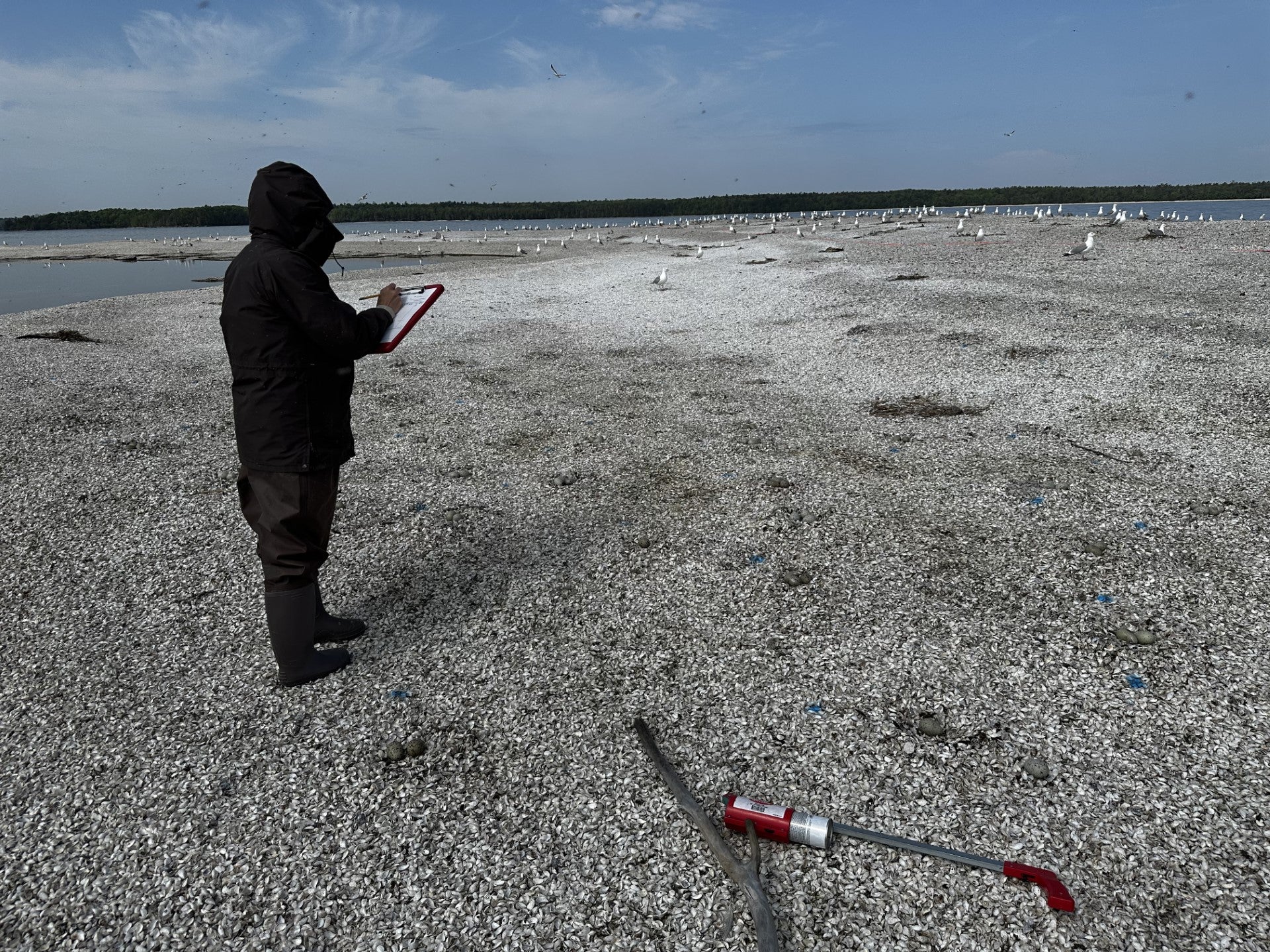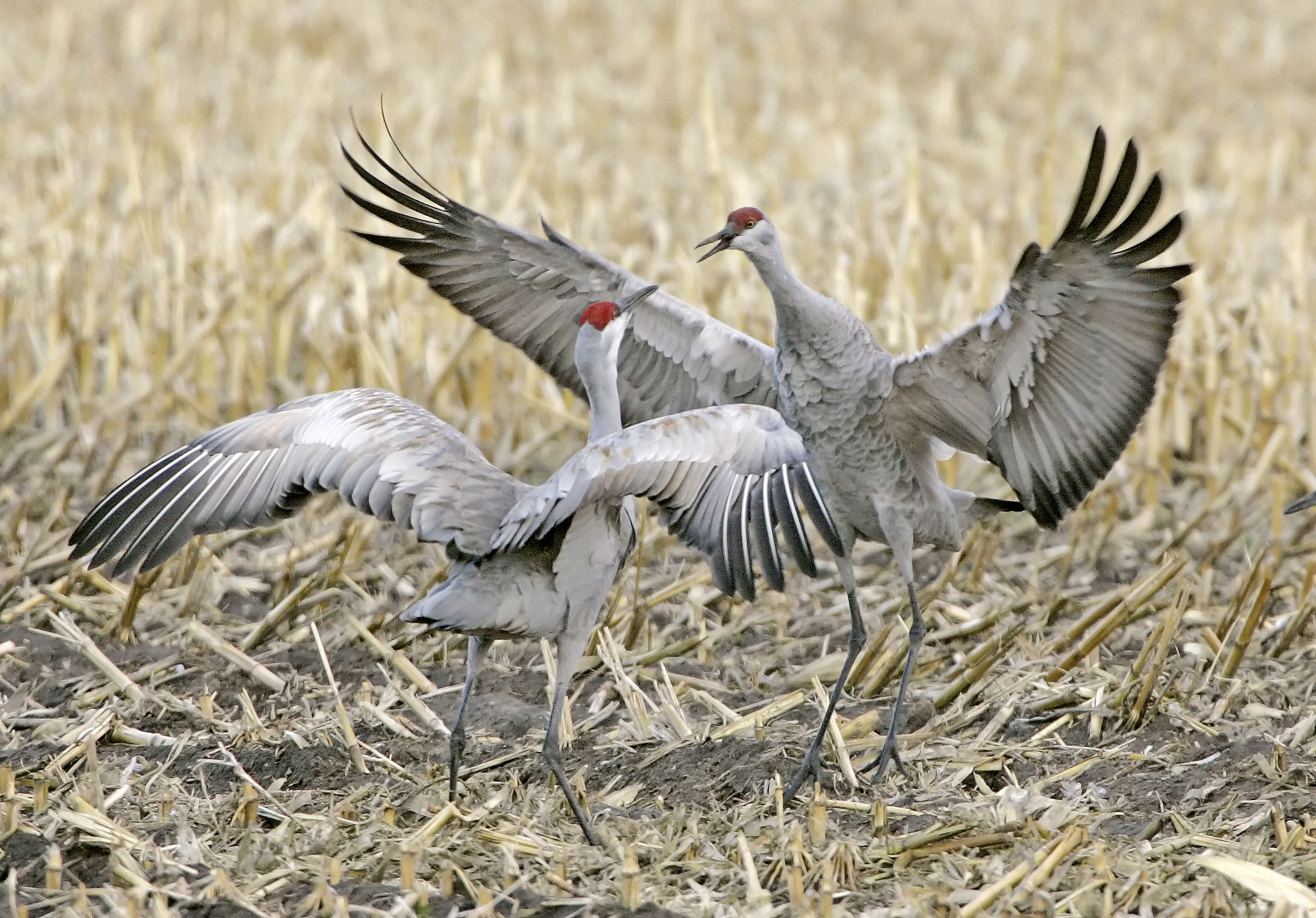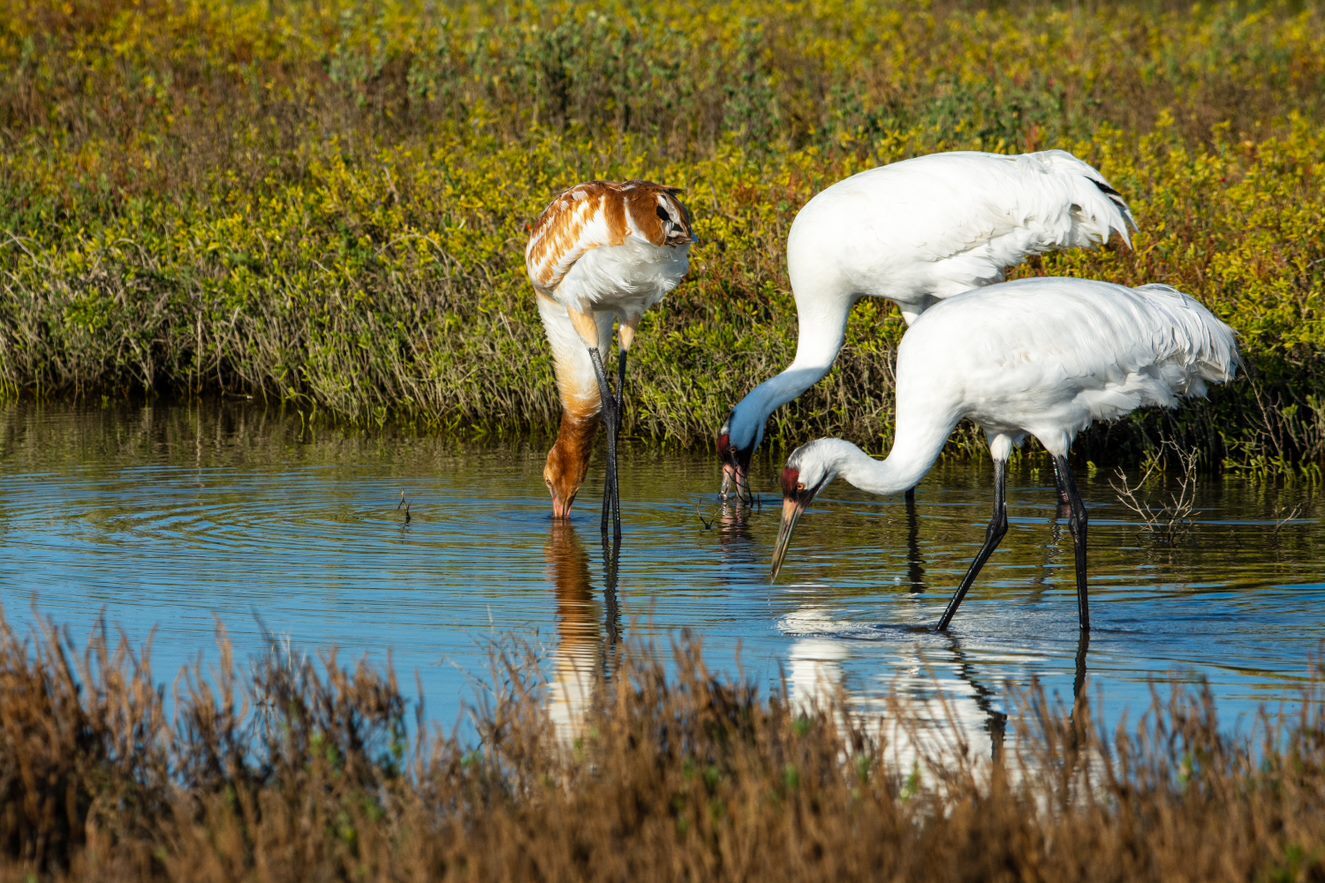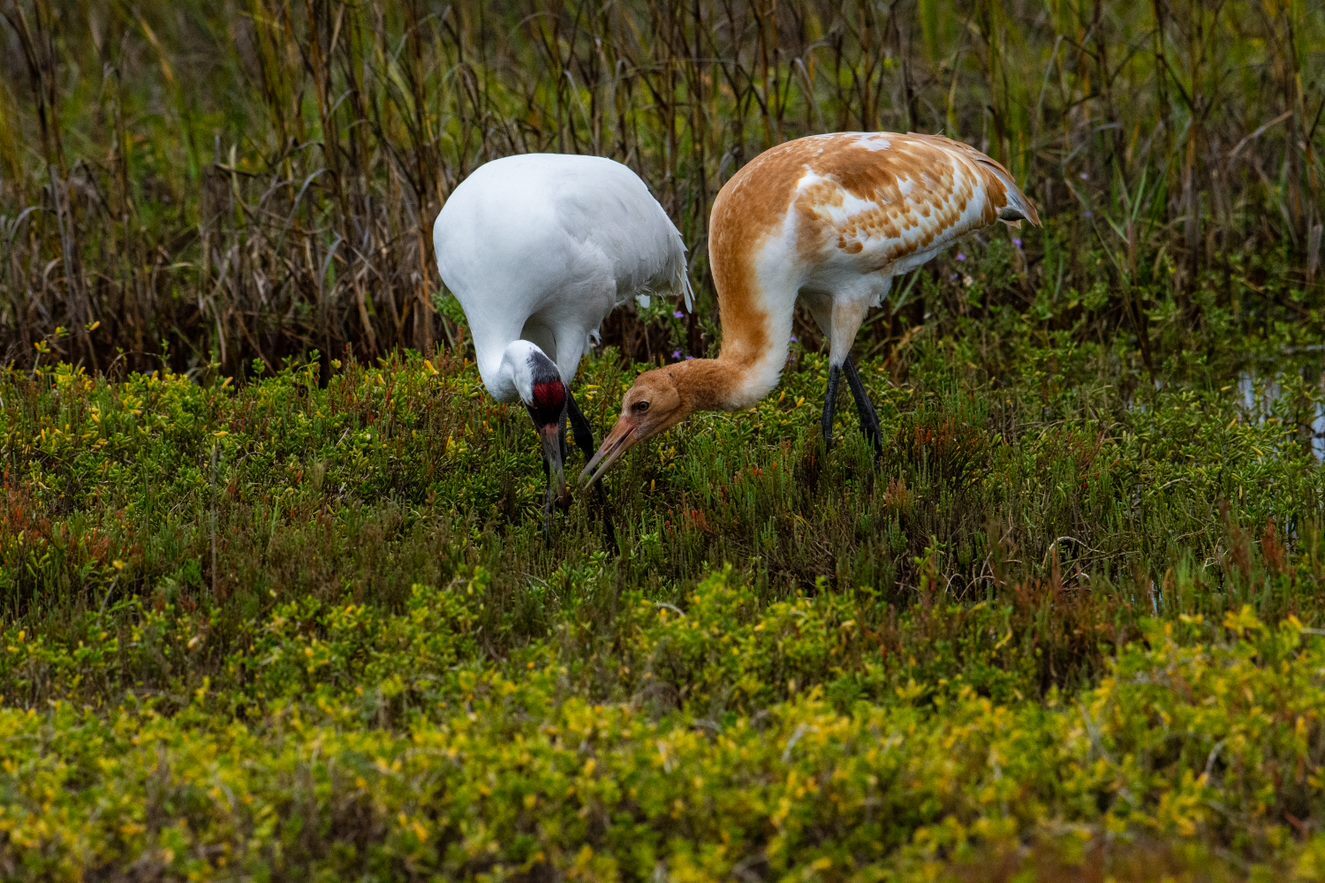Several changes are apparently in store for the whooping crane reintroduction effort that has a large base in Wisconsin. Those changes include Friday night’s announcement that ultralight aircraft pilots will no longer lead southerly migrations of crane chicks after the current migration is completed.
After 15 years of wearing a crane costume and being one of the pilots flying a tiny plane ahead of crane chicks from Wisconsin to Florida each fall, Joe Duff said on Saturday that he’s trying to adapt to the news that the ultralight-led migrations are ending.
“You can imagine, it’s been a traumatic time for us,” he said. “It’s been tough for us to give this up. We think it’s for the best.”
Stay informed on the latest news
Sign up for WPR’s email newsletter.
Duff and his organization, Operation Migration, advocated last week against the change. The discussions were at a three-day meeting of the Whooping Crane Eastern Partnership, the coalition of government agencies and private groups that has been working to create a self-sustaining migrating flock of 125 whoopers in the eastern U.S. The effort is partly a safeguard for the endangered species in case of harm to a flock of whooping cranes that migrate between Western Canada and Texas.
But by the end of the meetings at the International Crane Foundation, officials with U.S. Fish and Wildlife Service, the agency with the most clout in the partnership, had gotten the coalition to go with their plan to reduce human intervention in the crane project.
Pete Fasbender, fish and wildlife field supervisor, praised the work of Operation Migration and said there are now about 100 cranes in the eastern migrating flock. But he said not enough birds are successfully reproducing.
“They’re able to breed, able to lay eggs, but we found they are poor incubators, and those that do make it through the incubation, that they’re even worse parents.”
Fasbender said that since the cranes starting nesting in 2005, 70 chicks have been hatched, but only 10 chicks have fledged. So, he said it’s time to try something different. One plan is to attempt to get more of the adult cranes to — so to speak — adopt the young whoopers that are brought in every year from a research center in Maryland.
“We’re convinced that there’s so many cues and so many things that humans don’t know about this, really influential stage of a crane’s life that we can’t duplicate. We believe captive cranes can do a lot better,” he said.
Fasbender said the partnership might shift from focusing on the quantity of cranes to the quality. Anne Sayers, of the International Crane Foundation, said the coalition anticipates the changes will help the birds.
“I mean, the fact of the matter is we don’t know. And that’s why we apply our science to it,” she said. “We’re going to try this, we’re going to our measure our results and we’re going to make decisions that most benefit the species in the end.”
Sayers said the partnership may zero in on sites in Wisconsin where black flies don’t bother the cranes.
In a video shot by Operation Migration Sunday morning, crane chicks wait in their pen in Georgia for the day’s flight behind ultralight aircraft. If the weather remains suitable for flying, the birds might reach their destination in Florida in a few days.
Then, ultralight pilot Duff said that it’ll be time to end this phase of his work.
“It’s going to be interesting,” he said. “Maybe it’s kind of like seeing your kids off to college … you know, you wish them well and you’re going to miss them.”
The cranes that make it back to Wisconsin after winter break will be in a revised outdoor classroom.
Wisconsin Public Radio, © Copyright 2024, Board of Regents of the University of Wisconsin System and Wisconsin Educational Communications Board.

